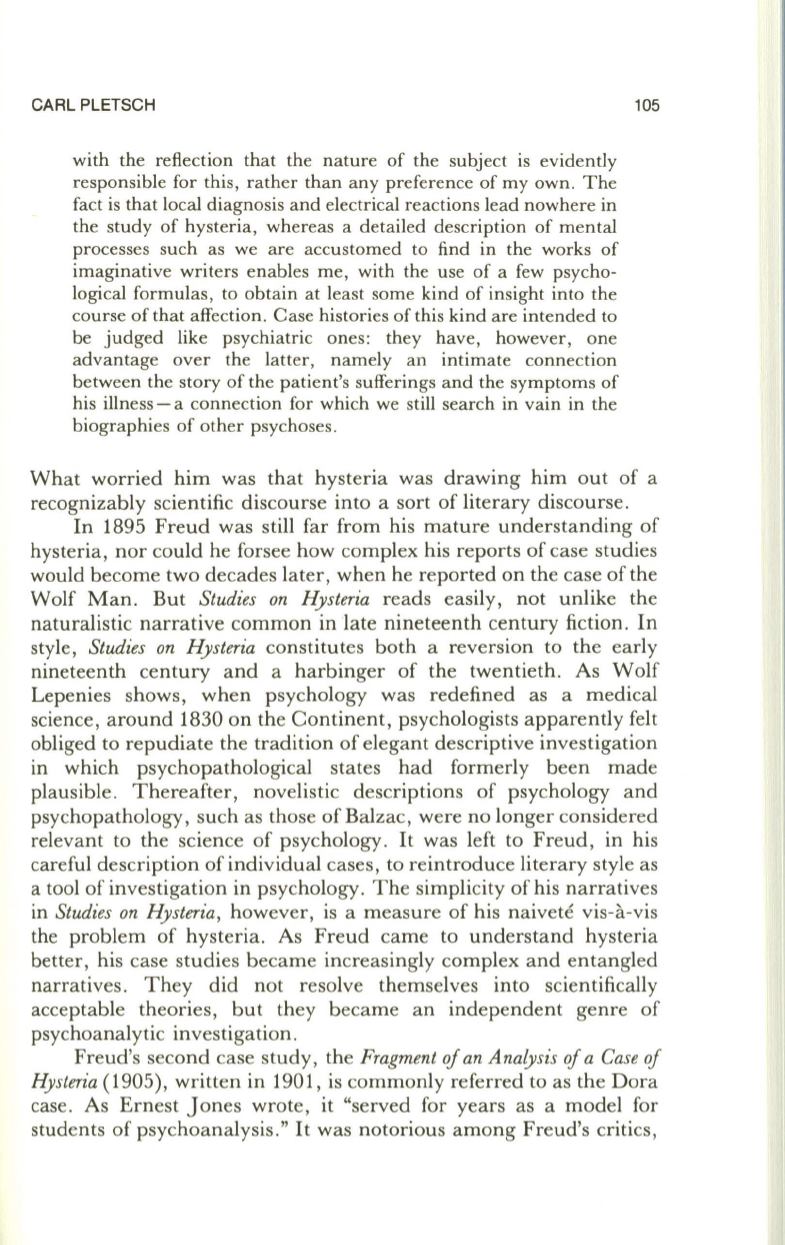
CARL PLETSCH
with the reflection that the nature of the subject is evidently
responsible for this, rather than any preference of my own. The
fact is that local diagnosis and electrical reactions lead nowhere in
the study of hysteria, whereas a detailed description of mental
processes such as we are accustomed to find in the works of
imaginative writers enables me, with the use of a few psycho–
logical formulas, to obtain at least some kind of insight into the
course of that affection. Case histories of this kind are intended to
be judged like psychiatric ones: they have, however, one
advantage over the latter, namely an intimate connection
between the story of the patient's sufferings and the symptoms of
his illness - a connection for which we still search in vain in the
biographies of other psychoses.
105
What worried him was that hysteria was drawing him out of a
recognizably scientific discourse into a sort of literary discourse.
In 1895 Freud was still far from his mature understanding of
hysteria, nor could he forsee how complex his reports of case studies
would become two decades later, when he reported on the case of the
Wolf Man. But
Studies on Hysteria
reads easily, not unlike the
naturalistic narrative common in late nineteenth century fiction. In
style,
Studies on Hysteria
constitutes both a reversion to the early
nineteenth century and a harbinger of the twentieth. As Wolf
Lepenies shows, when psychology was redefined as a medical
science, around 1830 on the Continent, psychologists apparently felt
obliged to repudiate the tradition of elegant descriptive investigation
in which psychopathological states had formerly been made
plausible. Thereafter, novelistic descriptions of psychology and
psychopathology, such as those of Balzac, were no longer considered
relevant to the science of psychology.
It
was left to Freud, in his
careful description of individual cases, to reintroduce literary style as
a tool of investigation in psychology. The simplicity of his narratives
in
Studies on Hysteria,
however, is a measure of his naivete vis-a.-vis
the problem of hysteria. As Freud came to understand hysteria
better, his case studies became increasingly complex and entangled
narratives. They did not resolve themselves into scientifically
acceptable theories, but they became an independent genre of
psychoanalytic investigation.
Freud's second case study, the
Fragment
oj
an Analysis
oj
a Case
oj
Hysteria
(1905), written in 1901, is commonly referred to as the Dora
case. As Ernest Jones wrote, it "served for years as a model for
students of psychoanalysis."
It
was notorious among Freud's critics,


